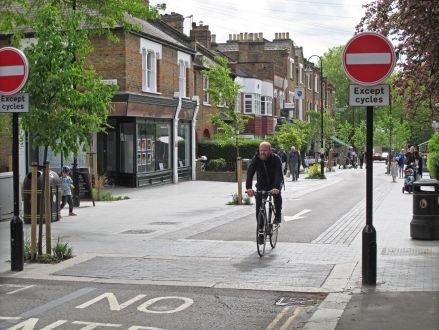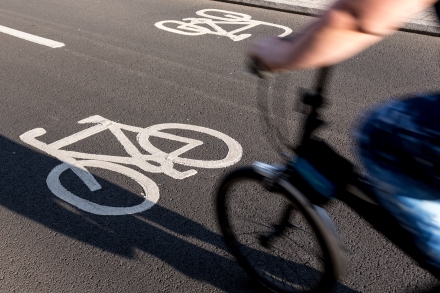
It would make no sense for Government to cut COVID-19 funding life support for light rail systems whilst it is rightly investing millions every week on expanding and renewing them.
This time, Government funding to close the gap caused by coronavirus on bus and tram had run out before a new funding deal was put in place. The deal (announced on 8 August) gives light rail in England outside London three months support before another funding cliff edge – with bus support now on a rolling deal with eight weeks’ notice of termination (but no clarity on what the criteria for termination might be). Meanwhile, the funding for additional public transport capacity (up until half-term) for schools came through just three weeks or so before the schools restart.
It’s clearly good that the Government is continuing to stand behind public transport financially. However, the way it’s being done is increasingly tangled with funding arrangements by mode and area becoming more divergent following the latest funding round. Transport for London, light rail outside London (not including Blackpool), buses outside London and national rail services are all now on funding deals on different time periods, and with different criteria (or no clear criteria) for decision making. Dealing with the consequences of last minute, cliff edge approaches to decision making (with all the cash flow and legal implications) also soaks up a phenomenal amount of time for our members and our staff.
The Treasury is also looking to scale back and escape from the COVID-19 funding arrangements as soon as they can – hence the short term nature of the deals and the deadline stand offs. This is scary stuff for transport authorities because there is little chance of patronage (and therefore income) returning to where it was pre-pandemic anytime soon – and the local authorities that stand behind transport authorities are underfunded for COVID-19 themselves. Any scaling back of funding support therefore could hit bus services in particular and hard. The reasons for this include that there’s only so much you can do at the margins to cut costs on light rail without shutting them down completely. Plus local transport authorities with light rail systems have all sorts of financial and legal obligations to the light rail systems that they own – which they don’t have for bus services, which are owned by somebody else. Other factors on bus include the return to normal de-registration periods for bus services, which combined with funding uncertainty or retrenchment, could trigger a wave of de-registrations of commercial services. The Government is also still looking to local authorities and transport authorities to continue to pay out on an indefinite basis concessionary travel reimbursement at pre COVID-19 rates (i.e. for concessionary journeys that are not currently being made). This is something which is not sustainable given the state of wider local government finances.
All of this casts not only a long shadow over the ability of transport authorities to plan ahead but also the Government’s longer term aspirations for urban transport and the ‘levelling up’ agenda. This includes the Prime Minister’s intent to turn around a declining bus sector with the £3 billion of additional Government funding which it announced prior to the pandemic. It also includes the millions that are being poured into renewing and expanding light rail systems which is happening right now. It makes no sense therefore to pull the rug from under public transport funding in the short term – if you are trying to build it up in the medium to long term. The way out of this conundrum could be the Spending Review and the national bus recovery strategy in the Autumn, which would be the logical point to build a bridge between an increasingly ragged emergency patch and mend approach designed to keeping the wheels turning on public transport for now and the more sustainable and robust arrangements which will be needed in order to segue into supporting the Government’s expansionist agenda for public transport post COVID-19.
The stabilisers are off

London Borough of Waltham Forest
To be clear, I’m all in with the active travel revolution set out in the Government’s new manifesto for Britain’s roads. How revolutionary is it? Very. Traditional street hierarchies turned upside down, only the best will be good enough on active travel infrastructure, go to sleep in Detroit and wake up in Delft. However, in one way not so revolutionary in that it’s the traditional centralised England approach of “we like what we’ve got in London so you need to do the same – chop chop, no backchat about the voters, and make sure nothing happens without our approval”. We are about to test whether this can work and in the way that it didn’t for road pricing for example. We are going to find out whether the populace has a universal latent desire to cycle which is about to be liberated – or creatures of habit who have enough on their plate without all this. More likely a bit of both which will play itself out in a form of street theatre. We are going to find out whether politicians in power locally (and almost as importantly, in many places in opposition) are going to be prepared to expend electoral capital on resisting any local backlashes (Waltham Forest being the shining example). We are also going to find out whether national politicians are going to stand behind the policy when the going gets tough locally and politicians of their own party are leading the backlash locally. And whether we can go from a standing start in many areas to ambitious transformation to high quality schemes which get it right first time.
So, if we are going to go Dutch (and not die trying), then there’s going to need to be more resources, both centrally (at Department for Transport and at the new Active Travel England), and locally. Not just capital but revenue too, in order to pay the people to design good schemes which communities can buy into. Wherever we can, we also need to be thinking more widely about ‘future streets’ when the opportunity comes from active travel funding. Because the street of the future need not only to be easier to navigate on foot or by bike, but also needs to be more climate resilient (shade and drainage), give buses priority, be sensitive to the needs of different types of disability as well as being responsive to a host of other legitimate outcomes too. The Headrow scheme in Leeds city centre is a good example of what I’m talking about – better for active travel but buses too, and also the opportunity was taken to put the pipes in at the same time for a district heating scheme – as well as street trees. All of which costs money, takes skills and resources and involves trade-offs.
Intercity – make the going easy
Maybe it’s been sorted now, but a few weeks ago if you travelled by rail from Newcastle to York and on LNER services, seat reservations were compulsory, on Cross Country you could sit anywhere and on Trans Pennine Express it was like full lockdown never ended – two metre distancing and the bare minimum of seats on offer per carriage. The exciting world of consumer choice now extends to the approach to a pandemic it seems. The railways’ bizarre bazaar of make believe ‘big four’ branding, pot luck fares and take your pick public health tactics looks like an increasingly strange and strained indulgence when the whole thing is an artifice propped up and puppeteered from Whitehall with public money. Never mind the legions of lawyers, economists and consultants that the taxpayer pays for to keep up the front of house pretence that the railways are a dynamic, competitive and private sector market. With patronage hammered by COVID-19 the fight back is going to be tough for rail as it is, so why waste time and money perpetuating this expensive fiction when you could cut through it all by recreating a national intercity network again. Guaranteed frequencies for the nations’ major cities on a more consistent basis, straightforward long distance fares and intercity a big player on the national travel scene again. This is something that you could market and promote the hell out of, get your story straight for the twists and turns of the pandemic to come, and sell on the basis of the environmental credentials that people do care about rather than make believe identities that nobody cares about.
Jonathan Bray is Director of the Urban Transport Group



 My work at the Urban Transport Group spans a whole range of policy areas, from freight to smart transport futures, sustainability to planning – and the new vision for walking and cycling has something for all of them!
My work at the Urban Transport Group spans a whole range of policy areas, from freight to smart transport futures, sustainability to planning – and the new vision for walking and cycling has something for all of them!